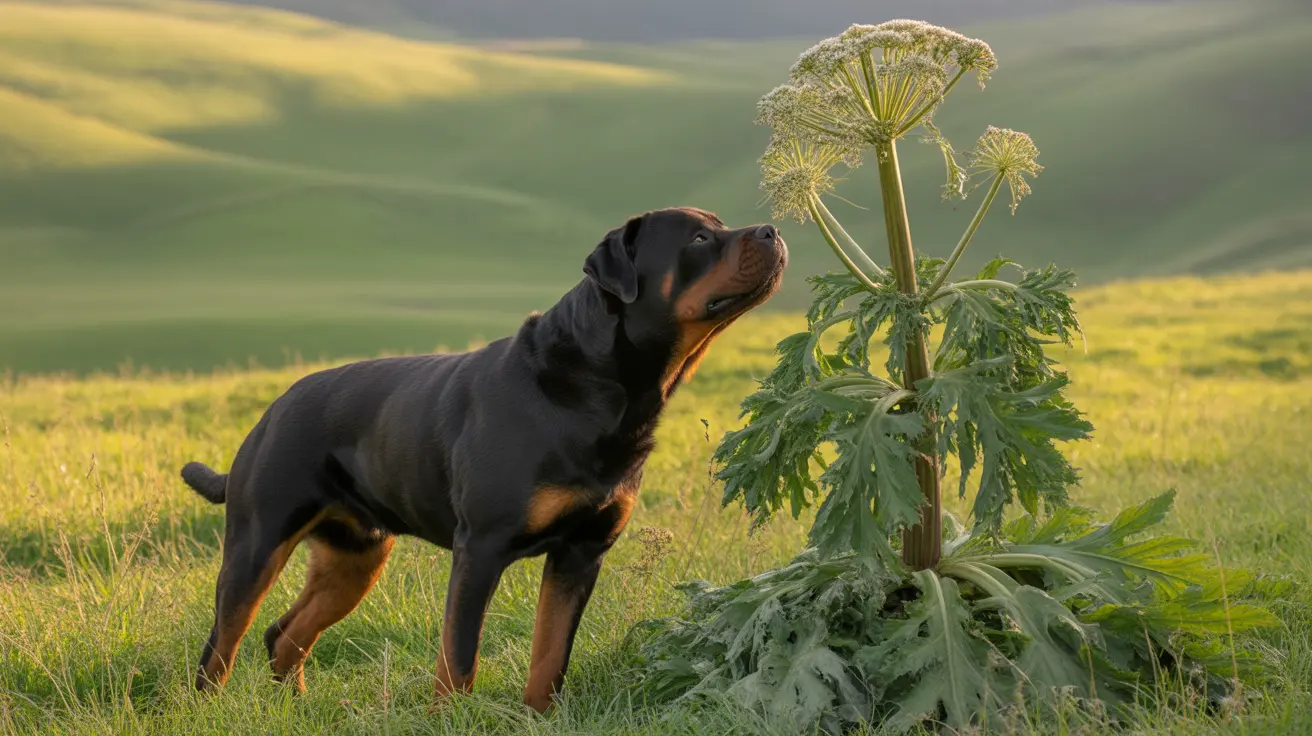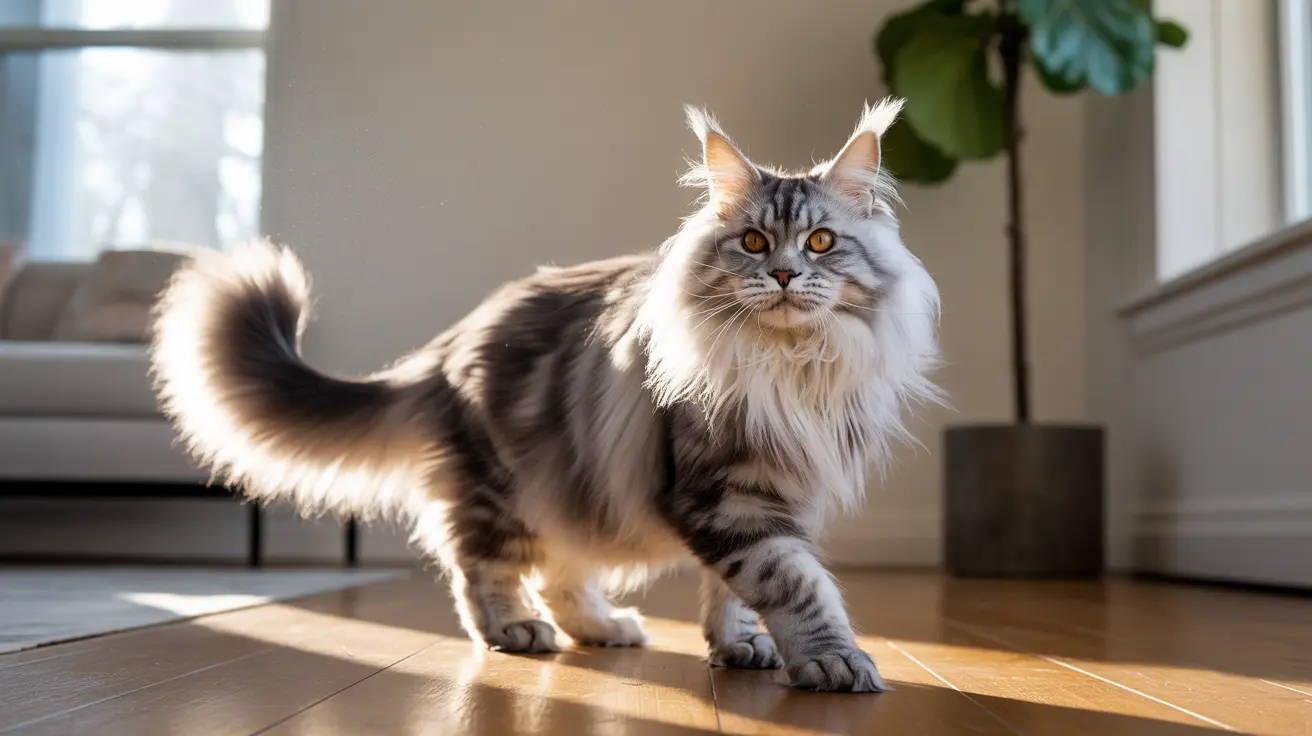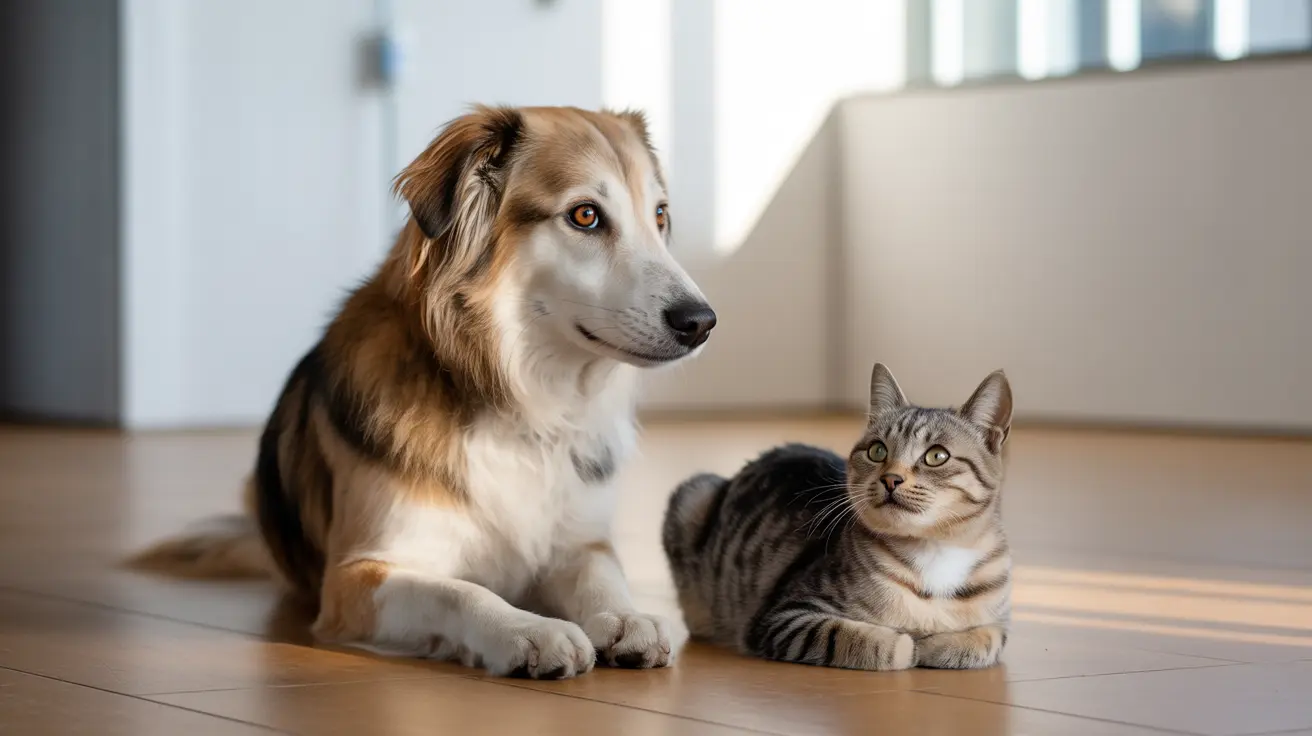Giant Hogweed Poisoning in Dogs and Cats: Protecting Your Pets from This Dangerous Plant
Giant hogweed represents one of the most dangerous plant threats to our beloved pets, yet many dog and cat owners remain unaware of its devastating potential. This towering invasive species, which can reach heights of nearly 15 feet, contains phototoxic compounds that can cause severe burns, permanent scarring, and even blindness in animals. Understanding giant hogweed poisoning in dogs and cats is crucial for any pet owner who allows their animals outdoors, particularly those living in areas where this hazardous plant has established itself.
The threat posed by giant hogweed is particularly insidious because initial contact with the plant produces no immediate symptoms. It's only when the affected skin is exposed to sunlight that the devastating chemical reactions begin, often catching pet owners completely off guard. This delayed reaction means that by the time symptoms appear, significant damage may have already occurred, making prevention and early recognition absolutely critical for protecting our furry companions.
Identifying Giant Hogweed: A Critical Skill for Pet Owners
Giant hogweed (Heracleum mantegazzianum) is often mistaken for less harmful plants like cow parsnip, but this confusion can have serious consequences for pet safety. This invasive species, native to Asia but now widespread across North America and Europe, has distinctive characteristics that every pet owner should learn to recognize.
The plant reaches impressive heights, sometimes growing over 15 feet tall with thick, hollow stems that are ridged and marked with distinctive purple spots or blotches. The most recognizable feature is its large white umbrella-shaped flower clusters, which bloom from June through July, though the plant remains dangerous throughout its growing season from May to September. The leaves are massive and spiky, adding to the plant's imposing appearance.
Giant hogweed typically thrives in sunny, moist environments such as riverbanks, meadows, roadsides, forest edges, and ditches. These locations often overlap with popular walking areas for dogs and territories that free-roaming cats might explore, making awareness of these habitats essential for pet owners.
Distinguishing Giant Hogweed from Similar Plants
The confusion between giant hogweed and related species like cow parsnip (Heracleum maximum) and wild parsnip (Pastinaca sativa) is common but dangerous. While cow parsnip is generally shorter and less toxic, it can still cause skin irritation in pets. Wild parsnip produces yellow flowers rather than white and can cause similar skin reactions. The key distinguishing features of giant hogweed include its exceptional height, white umbrella-shaped flowers, purple-spotted stems, and preference for moist environments.
Understanding the Toxic Mechanism: How Giant Hogweed Harms Pets
The danger of giant hogweed lies in its sap, which contains powerful phototoxic chemicals called furanocoumarins (also known as psoralens). These compounds create a condition known as phytophotodermatitis when they come into contact with skin and are subsequently exposed to sunlight. The furanocoumarins bind directly to DNA and RNA in skin cells, causing cellular destruction and severe inflammation.
This toxic mechanism makes giant hogweed particularly dangerous because the initial contact appears harmless. The sap is most concentrated in the stems and foliage, and pets can be exposed through direct contact during outdoor activities. The chemical reaction only begins when the affected area is exposed to strong sunlight, typically developing over the next few days after initial contact.
Both dogs and cats are equally susceptible to giant hogweed poisoning, though cats may be at slightly higher risk due to their grooming behaviors, which can spread the sap to other parts of their body, including sensitive areas around the face and mouth.
Recognizing Symptoms of Giant Hogweed Exposure in Pets
The symptoms of giant hogweed poisoning in dogs and cats can be severe and long-lasting, making early recognition crucial for proper treatment. Initial symptoms typically appear within 24 hours of sun exposure and may worsen rapidly without proper care.
Skin-Related Symptoms
The most common and visible symptoms affect the skin and include severe redness and itching at the contact site. Within two days, pets often develop painful blistering rashes that can be extremely uncomfortable. These blisters may progress to form ulcerative and exudative dermatitis, with the affected skin becoming swollen, raw, and prone to secondary bacterial infections.
In severe cases, the skin damage can lead to necrotizing tissue death, permanent scarring, and areas of hyperpigmentation that may persist for years. The nose, ears, and other areas with less hair coverage are particularly vulnerable in both dogs and cats. Female cats may also experience dermatitis around the vulva area.
Systemic and Behavioral Symptoms
Beyond skin damage, pets may exhibit systemic symptoms including vomiting, diarrhea, and increased salivation. Dogs might show obvious signs of discomfort and pain, while cats often demonstrate more subtle changes such as decreased activity, hiding behavior, and aversion to sunlight.
The photosensitization caused by giant hogweed means that affected pets will experience heightened sensitivity to sunlight for extended periods, sometimes lasting several years. This ongoing sensitivity can cause recurring symptoms whenever the pet is exposed to strong sunlight.
Ocular Complications
One of the most serious complications occurs when giant hogweed sap comes into contact with the eyes. This can result in cloudy corneas, severe eye inflammation, permanent scarring, and potentially complete blindness. Eye exposure requires immediate emergency veterinary care to prevent permanent vision loss.
Immediate First Aid and Emergency Response
Quick action following suspected giant hogweed exposure can significantly reduce the severity of symptoms and prevent long-term complications. The first and most critical step is to immediately rinse the affected area with large amounts of water to remove any remaining sap from the pet's skin or fur.
After initial rinsing, thoroughly wash the affected areas with a gentle pet shampoo, taking care to protect yourself by wearing gloves during the cleaning process. It's essential to avoid sun exposure during and after cleaning, keeping your pet indoors or in shaded areas, particularly during peak sunlight hours between 10 AM and 4 PM.
If the eyes have been affected, flush them gently with clean water and seek emergency veterinary care immediately. Do not wait for symptoms to develop, as eye damage can progress rapidly and result in permanent vision loss.
When to Contact Your Veterinarian
Contact your veterinarian immediately if you suspect giant hogweed exposure, even before symptoms appear. Early intervention can prevent or minimize the severity of the reaction. Definitely seek professional care if you observe any skin damage, changes in behavior, signs of pain, or if the eyes have been affected.
Professional Veterinary Treatment Options
Veterinary treatment for giant hogweed poisoning focuses on managing symptoms, preventing complications, and supporting the healing process. The specific treatment approach will depend on the severity of exposure and the symptoms present.
Diagnostic Procedures
Veterinarians typically begin with a thorough physical examination and symptom assessment. In some cases, skin biopsies and histological analysis may be necessary to confirm the diagnosis and rule out other conditions. Blood work, including liver enzyme tests, helps assess overall health and guide treatment decisions.
Treatment Protocols
Treatment often includes washing affected areas with specialized shampoos designed to remove any remaining plant residue. Topical steroid creams or sprays are commonly prescribed to reduce pain, inflammation, and itching. In severe cases, oral corticosteroids like prednisone may be necessary to control systemic inflammation.
Bandaging protects damaged skin from further injury and contamination, while Elizabethan collars prevent pets from licking or scratching affected areas. Antibiotics may be prescribed to prevent or treat secondary bacterial infections, particularly important given the open wounds that can develop.
Pain management is a crucial component of treatment, as giant hogweed burns can be extremely painful. Your veterinarian may prescribe appropriate pain medications to keep your pet comfortable during the healing process.
Special Considerations for Cats
Cats require particular attention during treatment because they often hide symptoms longer than dogs, making close behavioral observation essential. They should be kept in cool, dark environments during recovery, and owners must be especially vigilant about preventing sun exposure during the extended healing period.
Long-Term Care and Management
Recovery from giant hogweed poisoning can be a lengthy process, with some effects lasting for years. The affected skin remains highly sensitive to sunlight long after the initial healing, requiring ongoing protection and management.
Pet owners must understand that once affected by giant hogweed, their pets will need lifelong sun protection for the affected areas. This includes applying pet-safe sunscreen to previously affected skin before any outdoor exposure and limiting sun exposure during peak hours. Protective clothing or keeping pets indoors during the brightest parts of the day may be necessary for severely affected animals.
Regular monitoring for signs of recurring reactions or complications is essential. Some pets may develop permanent scarring, areas of altered pigmentation, or chronic sensitivity that requires ongoing veterinary management.
Prevention Strategies for Pet Owners
Preventing giant hogweed exposure is far preferable to treating its effects. The most effective prevention strategy is awareness and avoidance of areas where the plant grows.
Supervision and Leash Control
Keep dogs on leashes during walks in areas where giant hogweed might be present, particularly near water sources, roadsides, and meadows. For free-roaming cats, increased monitoring and limiting their access to high-risk areas during the plant's active growing season is essential.
Environmental Management
If giant hogweed is discovered on your property, professional removal is recommended rather than attempting to handle it yourself. The plant is dangerous to humans as well as pets, and improper removal can spread the toxic sap and increase exposure risk.
Create safe zones in your yard by maintaining well-groomed areas free of invasive plants and providing alternative spaces for pets to exercise and explore safely.
Comparing Giant Hogweed to Other Dangerous Plants
While giant hogweed is among the most dangerous plants for pets, it's important to understand how it compares to other toxic species that pets might encounter. Unlike many poisonous plants that cause internal toxicity when ingested, giant hogweed primarily causes external damage through skin contact, though ingestion can also cause gastrointestinal symptoms.
The severity and long-lasting nature of giant hogweed reactions set it apart from most other plant-related pet hazards. While plants like wild parsnip can cause similar but typically less severe reactions, and plants like poison ivy cause different types of contact dermatitis, giant hogweed's combination of immediate tissue damage and long-term photosensitivity makes it uniquely dangerous.
Cost Considerations and Treatment Planning
The financial impact of giant hogweed poisoning can be significant, with treatment costs ranging from $200 to $800 for dogs, averaging around $400, and $100 to $400 for cats, with an average of $250. These costs can increase substantially if complications develop or if long-term care is required.
Pet insurance may cover treatment costs, but prevention remains the most cost-effective approach. The investment in education, proper supervision, and environmental awareness far outweighs the potential costs of treating severe giant hogweed poisoning.
Educating Family Members and Creating Safe Practices
Protecting pets from giant hogweed requires a family-wide approach to education and safety. Children should be taught to recognize the plant and understand the importance of keeping pets away from it. Family members who walk dogs should be educated about identification and prevention strategies.
Developing consistent safety practices, such as checking pets after outdoor activities and maintaining awareness of seasonal plant growth patterns, helps create a comprehensive protection strategy for your pets.
Frequently Asked Questions
How quickly do symptoms appear after giant hogweed exposure?
Symptoms typically develop within 24 hours of sun exposure following contact with the plant. Initial contact with the sap produces no immediate symptoms - the reaction only occurs when the affected skin is subsequently exposed to strong sunlight.
Can indoor pets be affected by giant hogweed?
While indoor pets have lower risk, they can be affected if the plant sap is tracked into the home on clothing, shoes, or other materials. Additionally, indoor pets that spend time on patios, in gardens, or are occasionally outdoors remain at risk during the plant's growing season.
How long does the skin sensitivity last after giant hogweed exposure?
The affected skin remains sensitive to sunlight for several years after initial exposure. Some pets may experience permanent photosensitivity in previously affected areas, requiring lifelong sun protection and monitoring.
Is giant hogweed dangerous during all seasons?
Giant hogweed is most dangerous during its active growing season from May to September, with peak toxicity during blooming periods in June and July. However, dried plant material can still retain some toxic properties, so year-round caution is advisable.
What should I do if my pet's eyes are exposed to giant hogweed sap?
Eye exposure requires immediate emergency veterinary care. Flush the eyes gently with clean water and seek professional treatment immediately, as eye damage can progress rapidly and result in permanent vision loss or blindness.
Can the toxic effects be completely reversed with treatment?
While proper treatment can minimize damage and support healing, some effects of giant hogweed exposure may be permanent. These can include scarring, altered skin pigmentation, and ongoing photosensitivity. Early treatment provides the best chance for complete recovery.
How can I safely remove giant hogweed from my property?
Professional removal is strongly recommended due to the plant's danger to humans as well as pets. If you must handle the plant yourself, wear full protective clothing, work during overcast conditions, and ensure pets are kept far away from the area during and after removal.
Conclusion
Giant hogweed poisoning in dogs and cats represents a serious threat that requires awareness, prevention, and prompt action when exposure occurs. This invasive plant's ability to cause severe, long-lasting damage through its phototoxic sap makes it one of the most dangerous botanical hazards our pets face. By learning to identify giant hogweed, understanding its toxic mechanisms, and implementing comprehensive prevention strategies, pet owners can protect their companions from this devastating plant.
The key to protecting our pets lies in education, vigilance, and quick response. While the effects of giant hogweed exposure can be severe and long-lasting, proper prevention and immediate action following suspected contact can make the difference between minor irritation and permanent injury. Remember that once exposed, affected pets will require ongoing care and sun protection, making prevention the most effective strategy for keeping our beloved dogs and cats safe from this dangerous invasive species.






